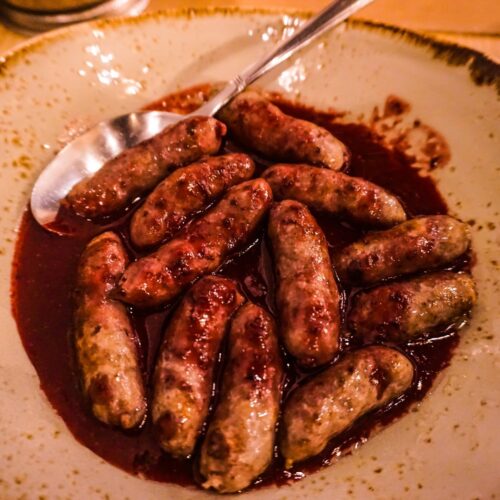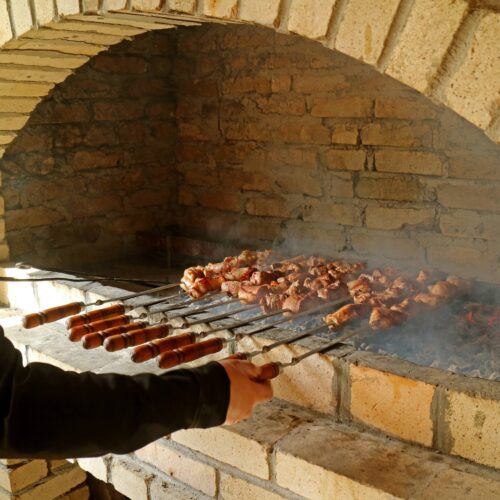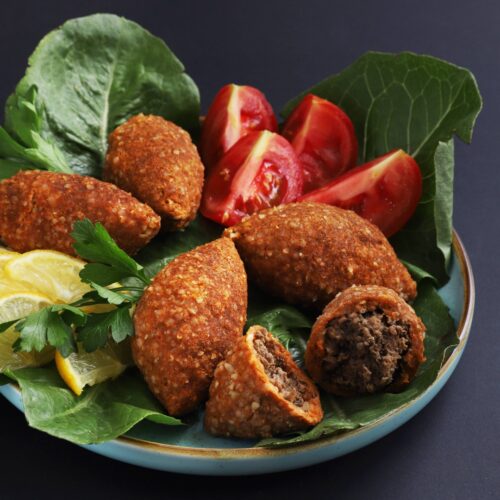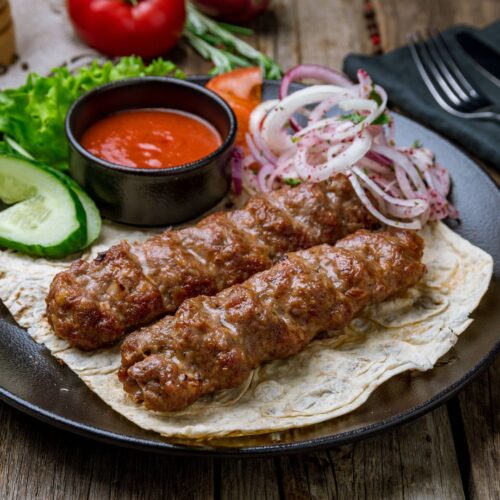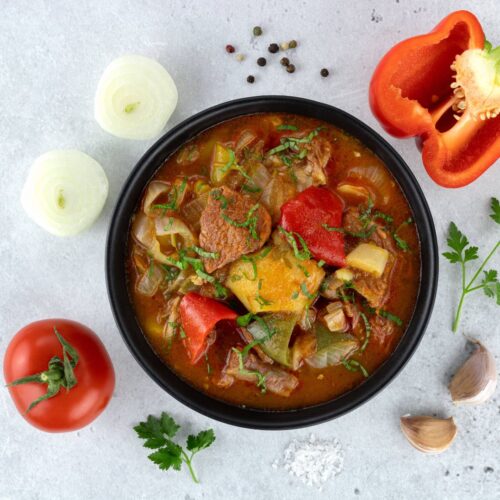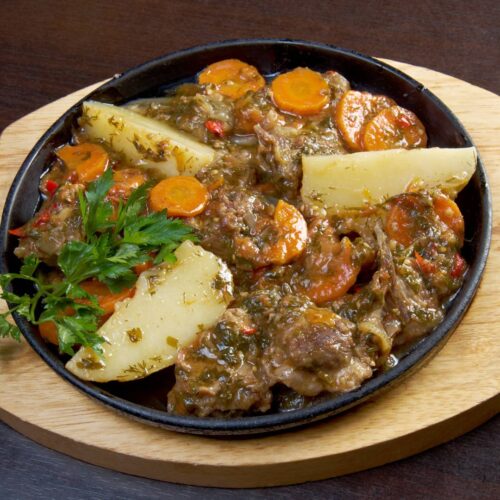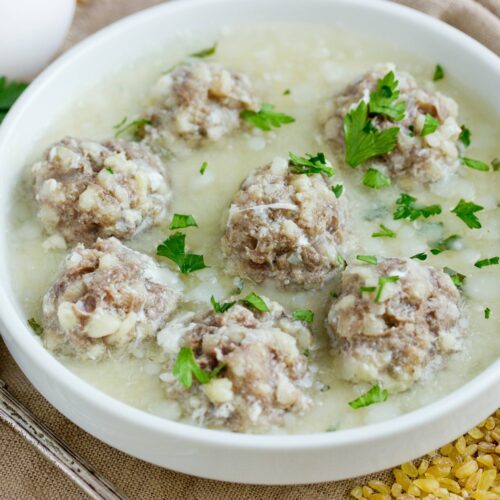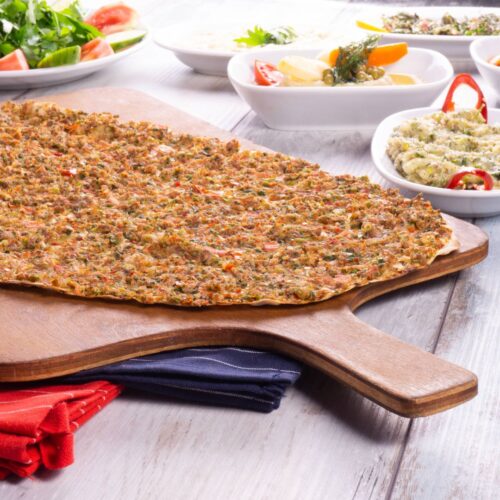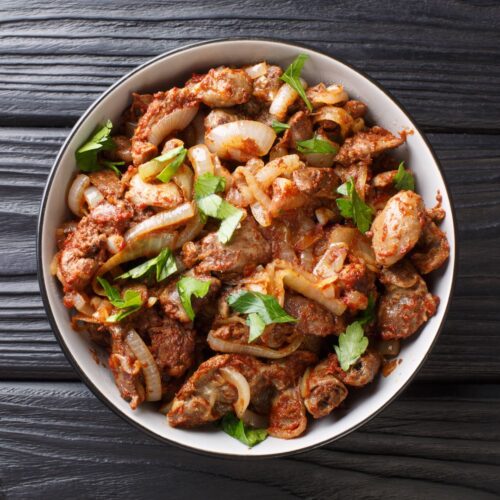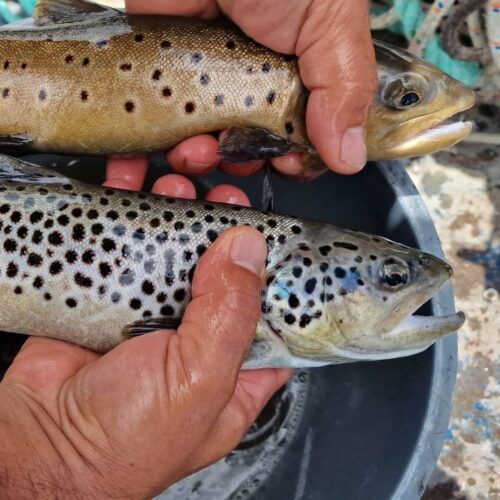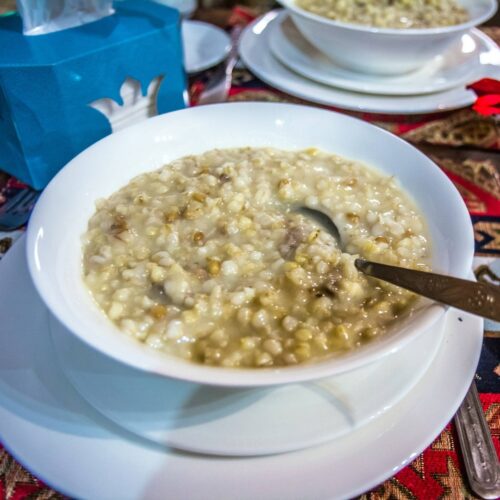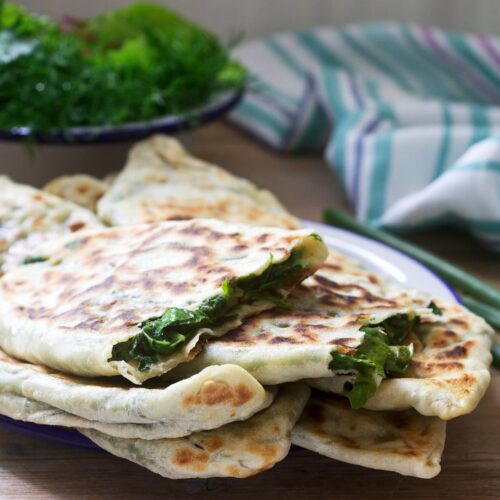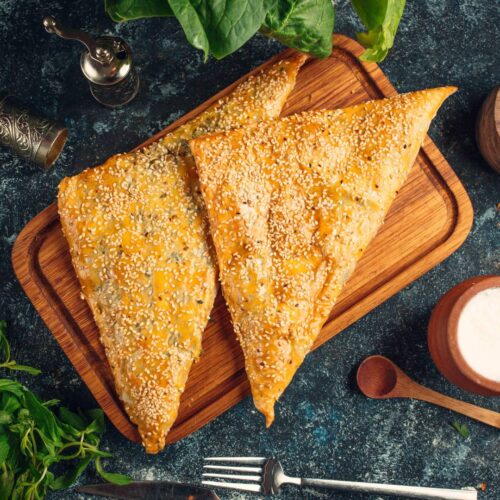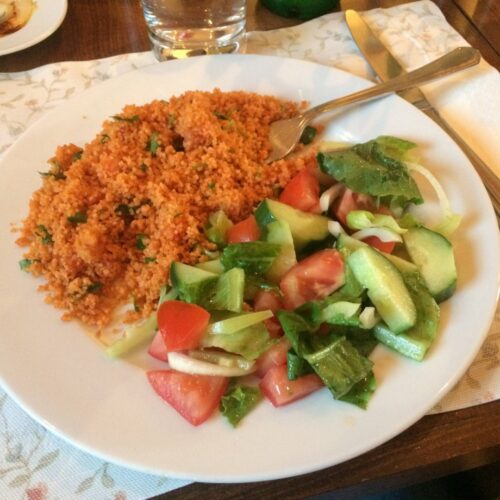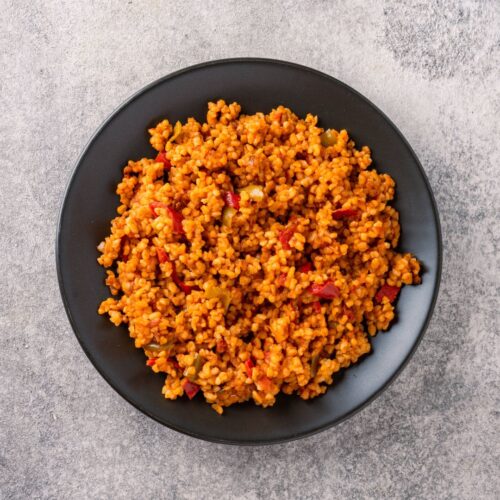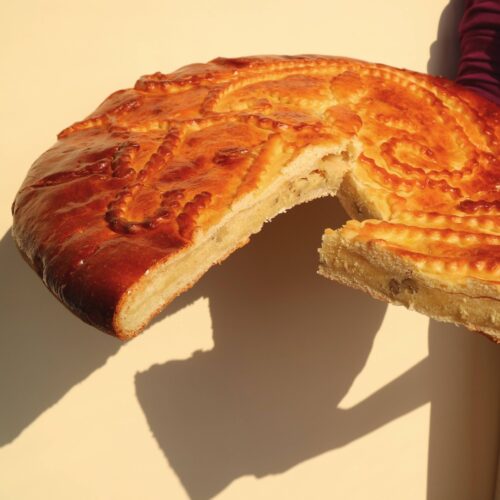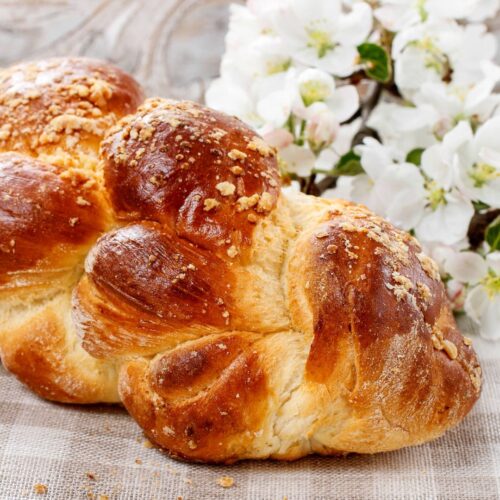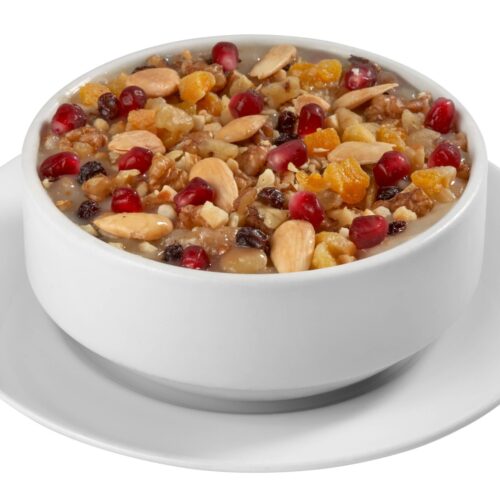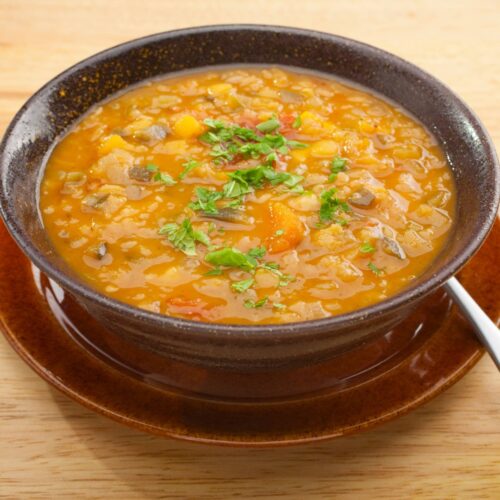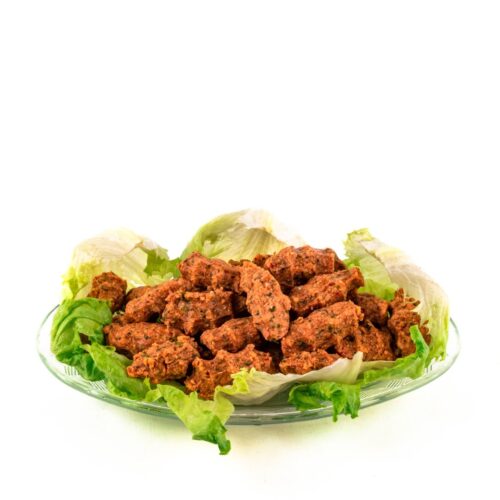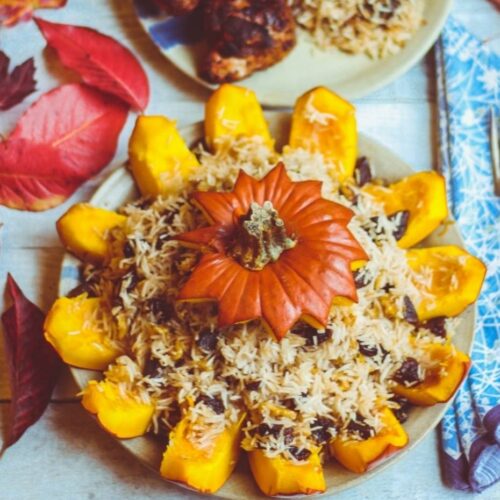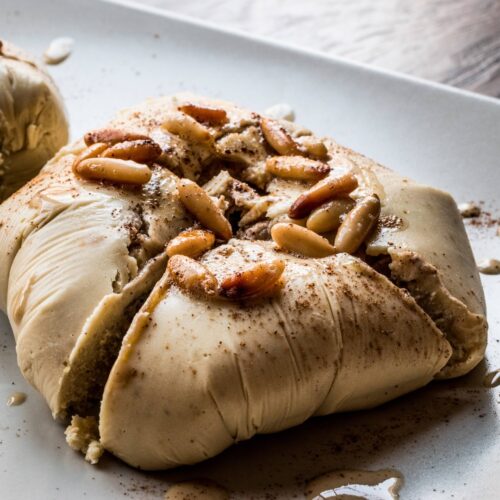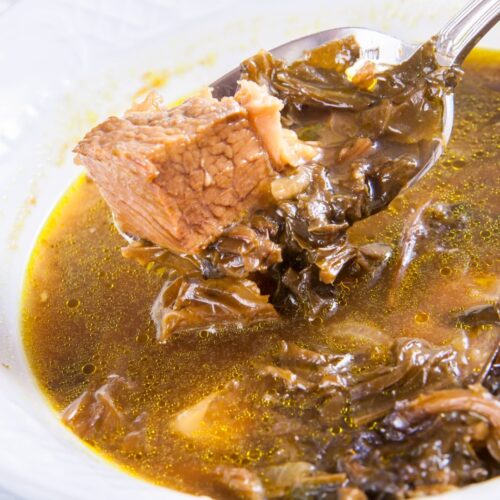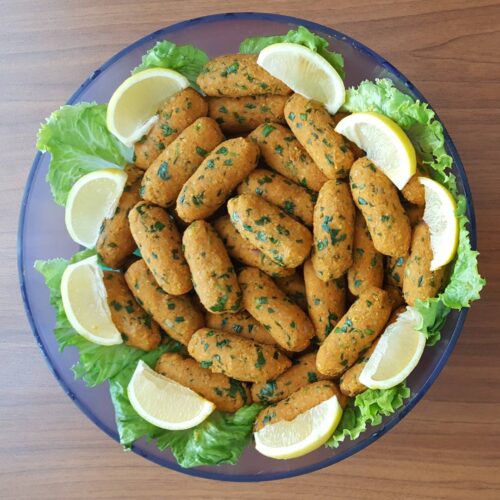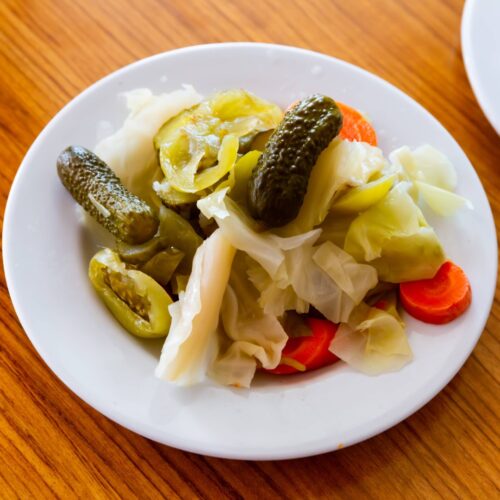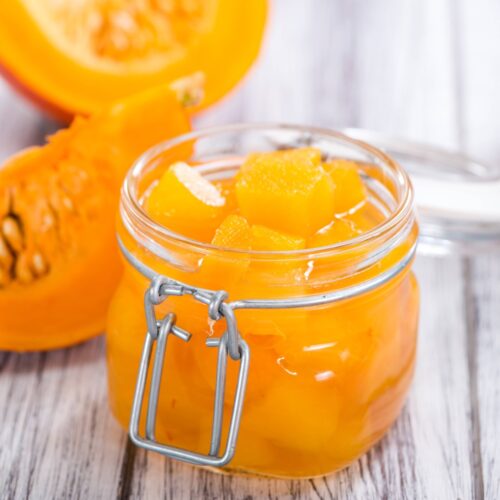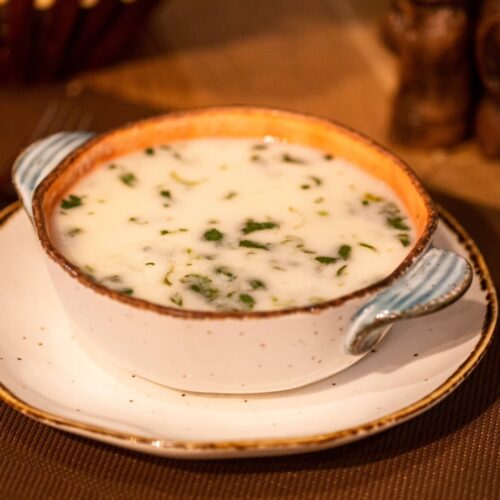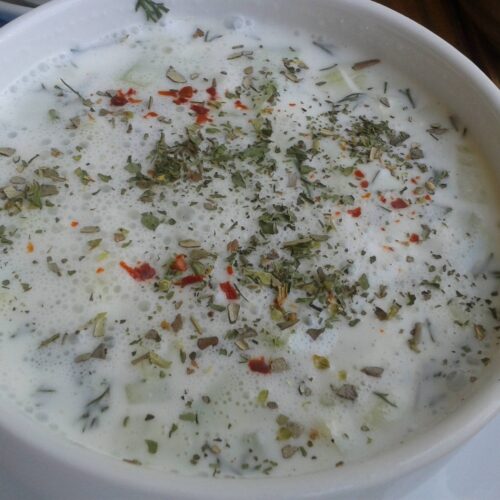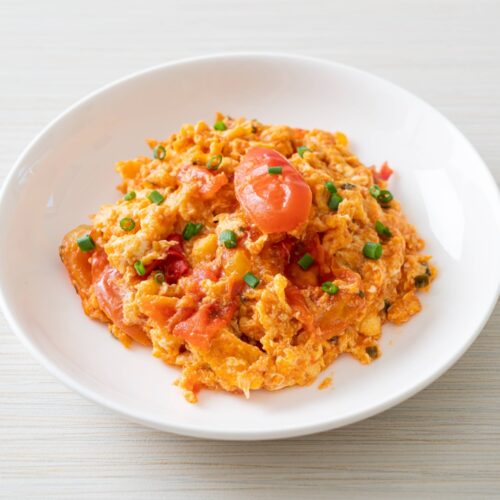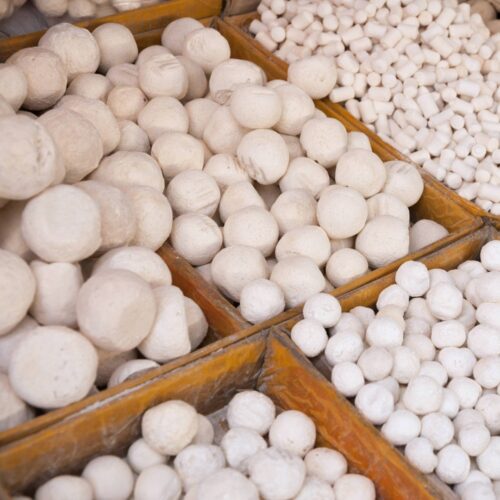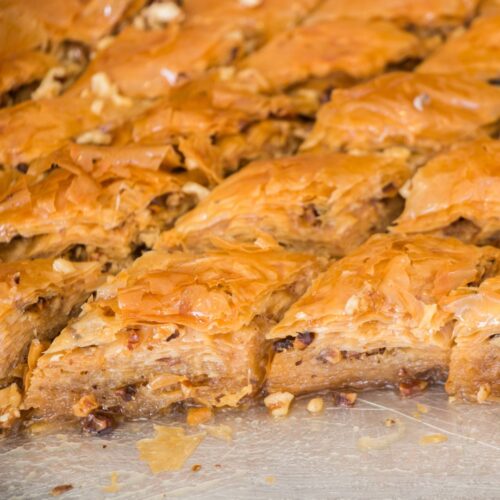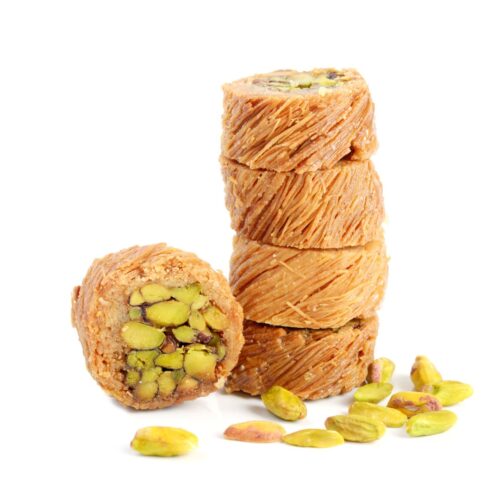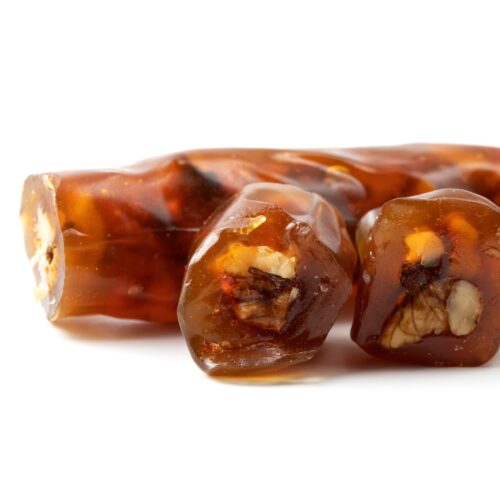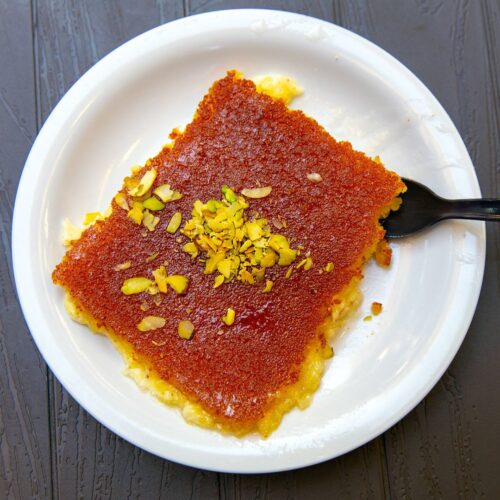YERSHIG / SUJUK / SUJUX – spicy, fatty beef sausage, highly flavored with cumin, garlic, paprika, and salt. Usually, semi-dried and fried before serving.
BASTURMA – highly seasoned air-cured beef, highly seasoned with garlic and fenugreek mixture and coated for preservation.
KHOROVATS – large chunks of meat marinated and skewered over open pits or in a tandoor oven.
ISHLI KUFTA – a variation of kufta, a dumpling made from a shell of ground bulgur with meat and filled with seasoned ground lamb or beef, cumin, allspice, pine nuts, and onions. Shaped into ovals and fried or baked. This dish is a variation of Levantine kibbeh.
LULA KEBAB – ground lamb with onions, seasoned with black pepper and salt, and grilled on skewers. Served with lavash, grilled veggies, and onions with sumac.
SINI MANTI – boat-shaped open dumplings with beef or lamb, served with yogurt sauce.
KHASHLAMA – spicy lamb or beef soup, slow-cooked for several hours with potatoes, onions, peppers, carrots, and regionally differing spices.
KCHUCH – a lamb stew, slowly cooked in a clay pot with chopped potatoes, tomatoes, peppers, eggplants, garlic and wine, served with lavash.
ARGANAK – clear chicken broth flavored with lemon and egg yolks and venison meatball soup with onions.
LAHMADJO / LAHMAJUN – is a flatbread with a spiced lamb or beef topping, minced vegetables, herbs, onions, garlic, tomatoes, red peppers, and parsley, flavored with chili and paprika, and baked. Originating from the Levant, it is very popular in Armenia.
KOLOLIK – lamb meatball soup.
TJVJIK / DZHVZHIG – liver or other offal pan-fried with chopped onions, tomato paste, garnished with handful of parsley.
KHASH – is boiled cow’s feet or other parts of the animal. It is a medieval dish usually eaten in winter and is believed to have medicinal properties as a hangover cure.
